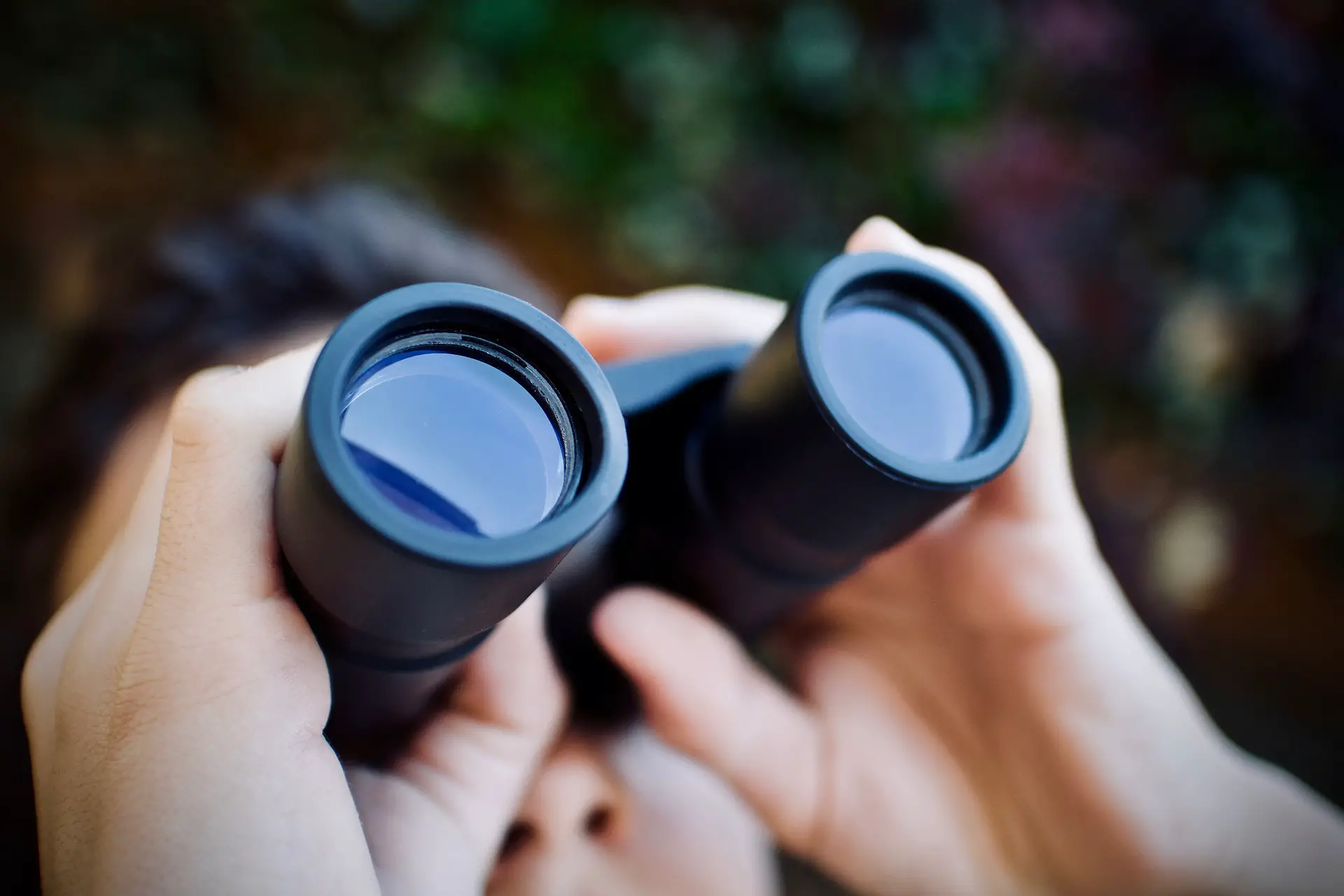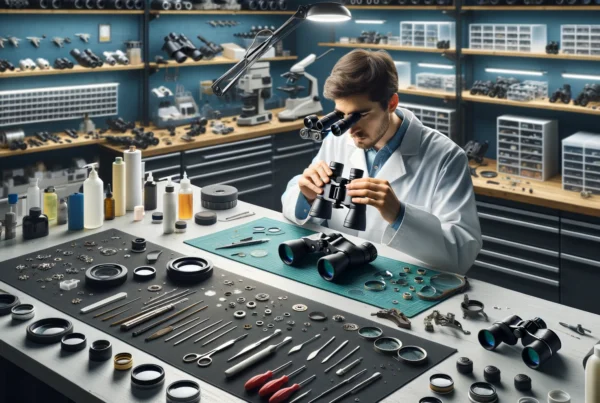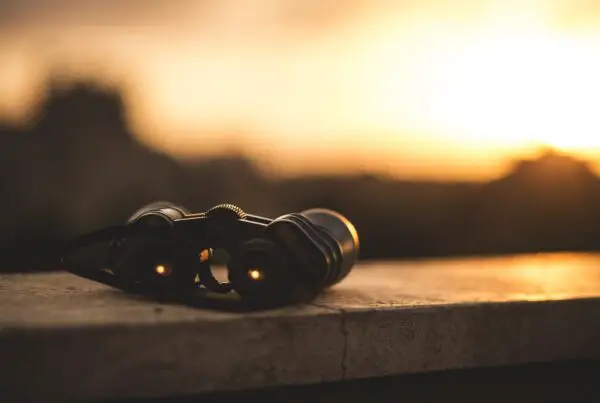Contents
When we choose between different binocular magnifications, we are also considering the binocular’s objective lens size. Both these elements collectively help us decide on our pair depending on our usage and needs.
Generally, 8x magnification binoculars are the standard when it comes to normal use. Some people may want to use them for bird watching. 10x magnification binoculars are more suitable in these situations because some birds are much smaller, and they may be hard to spot due to their quick movements.
8x magnification binoculars are also ideal for sports games, because they provide a wider yet closer view without narrowing your field of view.
In this article, we will differentiate the most common magnification numbers (8x and 10x) in binoculars to help you make an ideal choice.
Major Factors to Consider for Binoculars Magnification
While choosing between 8x or 10x magnification, here are a few important factors that will help you narrow down your choice:
Field Of View – How Wider you can See?
The field of view of your binoculars is the measurement of area you can see in front of you. Field of view is measured in degrees, with 180 degrees being the maximum. The wider the field of vision, the more you will be able to see at once. If you’re looking for a wide field-of-view, you will need binoculars with higher lens diameter.
If you like birdwatching and doing some hiking, then get a pair that offers both wide field of view and magnification. Binoculars with less than 8x magnification are considered to be standard, but you can upgrade to 10x magnification for more zoomed view of any object.
Image Stability – How Stable is your Binocular’s Image?
Image stability is also a factor to consider when buying binoculars. Image stability is the amount of blurriness and unsteadiness of an image on a binocular lens. This is controlled by the distance between the optical axis and the eyepiece. This is also known as “objective-to-eyepiece distance”.
The best solution to stabilize binoculars is to mount them on a tripod or on some other stable object (especially if they have 10x or higher magnification) where they can be held steady.
Second best would be to find an object that obstructs any light from coming into your eyes from behind you, such as a tree or building. These two factors will help stabilize your vision and greatly improve your experience with your binocular.
Moreover, 8x binoculars tend to be more stable with a wider field of view. However, they might not be best for those who want a fully zoomed-in view of an object.
Exit Pupil – Defines Brightness of your Object’s Image
The Exit Pupil is the size of the opening in a binocular lens, which is used to measure light transmission. The Exit Pupil has a link to the eye’s pupil, and this connection helps to understand how we see objects. The human eye’s pupil opens and closes according to the amount of light that it is exposed to, and this happens automatically thanks to Rod Cells inside our eyes. When we look through a pair of binoculars, the Exit Pupil is set by what size of object that we are viewing.
You can calculate exit pupil of any binoculars by dividing lens diameter with magnification number, For Example, 10×42 binoculars have 4.2 mm exit pupil diameter while 8×42 binoculars have 5.25 mm exit pupil diameter.
Eye Relief – 8x vs 10x
Eye Relief is the distance from your eye to the binocular lens. It is important that you have the proper Eye Relief in order to heighten your viewing experience. For instance, if you have a long-eye relief and you are wearing glasses, you need to take this into consideration, as it could cause damage to your eyesight.
Eye Relief in 8x Binoculars
The best eye relief for a good quality and comfortable viewing experience would be 14-16mm. This is because it allows you to view the binocular’s highest possible resolution, as well as reduces image shift caused by your eyes moving around. With that being said, the shorter the eye relief, typically the better it is. You will be able to get a more detailed and clear image at a closer range.
Eye Relief in 10x Binoculars
The best eye relief for 10x binoculars would be 15mm-18mm. This allows you to view an undistorted image, as well as reduces eye strain. Also, it provides a closer range to what you are viewing. If the distance is too long, then this could lead to experiencing double images or blurry vision because of your eyes moving around.
8x and 10x Binocular Magnifications with Varying Lens Diameters
Although 8x and 10x are two distinct magnifications, but these magnifications are accompanied by objective lens size of binoculars. These lens sizes make binoculars compact or larger without changing the magnification. Also, objective lens size make a huge difference in the viewing experience, exit pupil and eye relief
8×25 vs 10×25 Binoculars (25 mm Diameter Lens)
8×25 binoculars have a magnification level of 8 times and the lens diameter is 25mm. These types of binoculars provide a wider field of view and their lenses are easy to use and control.This makes it possible to focus on various objects that are far away or close by. They also work well in natural light.
10×25 binoculars, on the other hand, have the power to magnify an object up to 10 times and they have a lens diameter of 25mm as well. These type of binoculars, however, have a narrower field of view due to their high magnification level.
We have a separate Guide on 8×25 vs 10×25 Binoculars, please check it out.
8×42 vs 10×42 Binoculars (42 mm Diameter Lens)
The 8×42 binoculars offer a wider aperture while the 10×42 offers a higher magnification. The aperture is the diameter of the lens at the front end of a Binocular or other optical instrument that admits light.
The aperture determines brightness and thus range in low-light conditions, or when photographing very small objects, making it one of the most important technical specifications for binocular and photographic lenses.
10×42 binoculars are used for general-purposes, making them some of the most versatile optics, while 8×42 binoculars tend to be more stable and provide a wider view and brighter images due to their optimal magnification and lens diameter size.
Which one to Choose – 8x or 10x?
If you are considering to buy a pair of binoculars purely based on magnification (whether 8x or 10x), then it is recommended to buy standard sized binoculars having a 42 mm objective lens. However, if you want to buy compact or small-sized binoculars that you can carry for boating, marine, or travel purposes then 25mm lens diameter is ideal with both 8x and 10x magnifications.

A Binoculars enthusiast, who love exploring skies and watching birds. It is my hobby to collect Binoculars of different kinds and try to explore the world through various lenses. This is all I do to explore happiness by magnifying my beautiful world.




